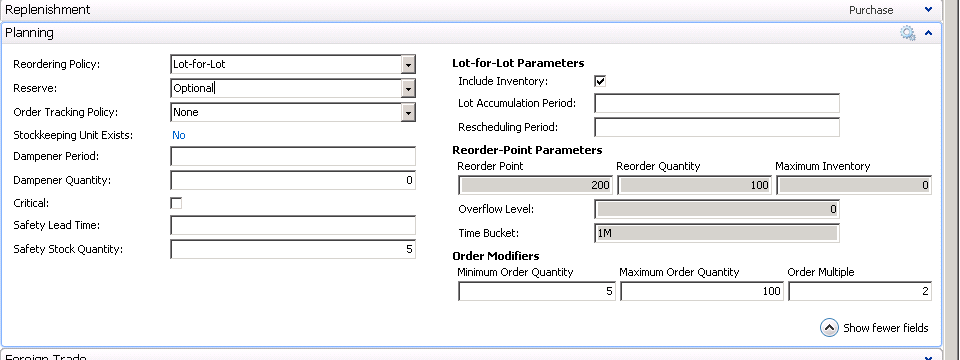New and Changed Item Setups for MRP Planning in Dynamics NAV 2013

The MRP planning functionality beginning with Microsoft Dynamics NAV 2013 has some changes from the previous versions of NAV to be aware of when setting up items for MRP planning.
If we look at the Planning Tab of an Item Card, we can see the following new fields:
- Dampener Period
- Dampener Quantity
- Lot Accumulation Period
- Rescheduling Period
Figure 1 – New fields in the Planning Tab of an Item Card
The Dampener Period and Dampener Quantity were in the Manufacturing Setup form in previous versions of NAV. The purpose of these fields is to suppress insignificant “Reschedule” Action Messages. For instance, you could suppress reschedule action messages that are under one week by setting the Dampener Period to 1W. The Dampener Quantity field suppresses “Quantity Change” Action Messages if they are smaller than what is populated in this field.
The Lot Accumulation Field was called “Reorder Cycle” in previous versions of NAV. The APICS (American Production and Inventory Control Society) name for this field is called “Period Order Quantity”. If we look in the APICS dictionary we find the definition for Period Order Quantity is “A lot-sizing technique under which the lot size is equal to the net requirements for a given number of periods (e.g., weeks into the future).”
If we look in the APICS Dictionary for “Rescheduling Assumption” we find the following: A fundamental assumption of MRP logic that existing open orders can be rescheduled in nearer time periods far more easily than new orders can be released and received. As a result, planned order receipts are not created until all scheduled receipts have been applied to cover gross requirements.
NAV 2013 modifies this a bit:
A fundamental assumption of MRP logic is that existing open orders within the Rescheduling Period can be rescheduled in nearer time periods far more easily than new orders can be released and received. As a result, planned order receipts are not created until all scheduled receipts have been applied to cover gross requirements.
For more information on this or any other Dynamics NAV topic, please contact ArcherPoint.
For more step-by-step instructions on how to perform specific tasks in Microsoft Dynamics NAV, see our collection of How-To blogs.

